How to Spot Hidden Roof Damage in 5 Minutes Using High-Resolution Drone Imagery
December 8, 2025
In just five minutes, high-res drone and thermal imaging reveal hail, wind, and moisture damage you can’t see from the ground—safer, faster, and fully documented.
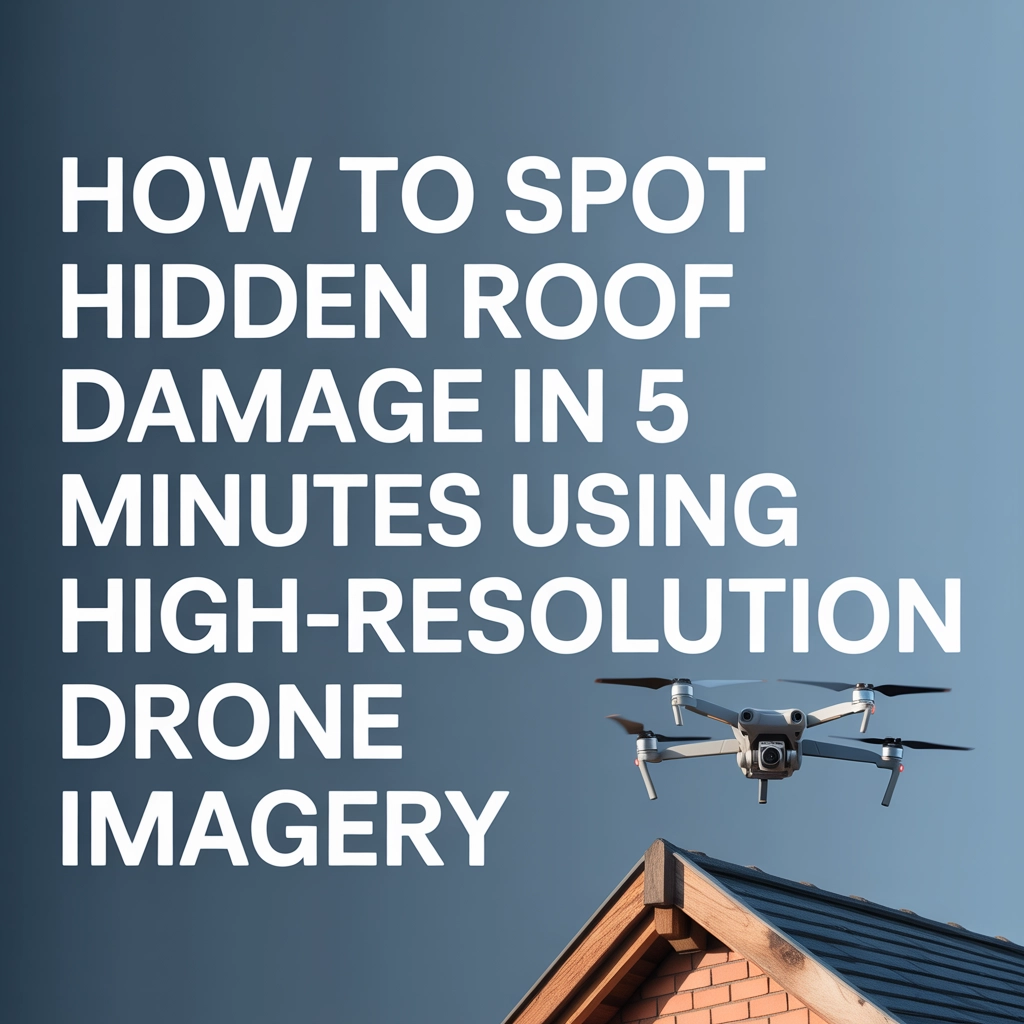
Traditional roof inspections require climbing ladders, walking on potentially damaged surfaces, and spending hours manually examining each section. High-resolution drone technology eliminates these limitations while delivering comprehensive damage assessment in approximately five minutes.
The Technology Behind Rapid Detection
Modern inspection drones carry 4K cameras that capture images with sufficient detail to identify granule loss, micro-fractures, and other subtle damage indicators from aerial positions. These systems fly predetermined grid patterns over roof surfaces, capturing overlapping images at eight points per square foot to ensure complete coverage.
The inspection process combines visual spectrum photography with thermal imaging capabilities. Thermal sensors detect temperature variations that indicate trapped moisture, compromised insulation, or heat transfer anomalies not visible to standard cameras. This dual-sensor approach reveals both surface damage and underlying structural issues.
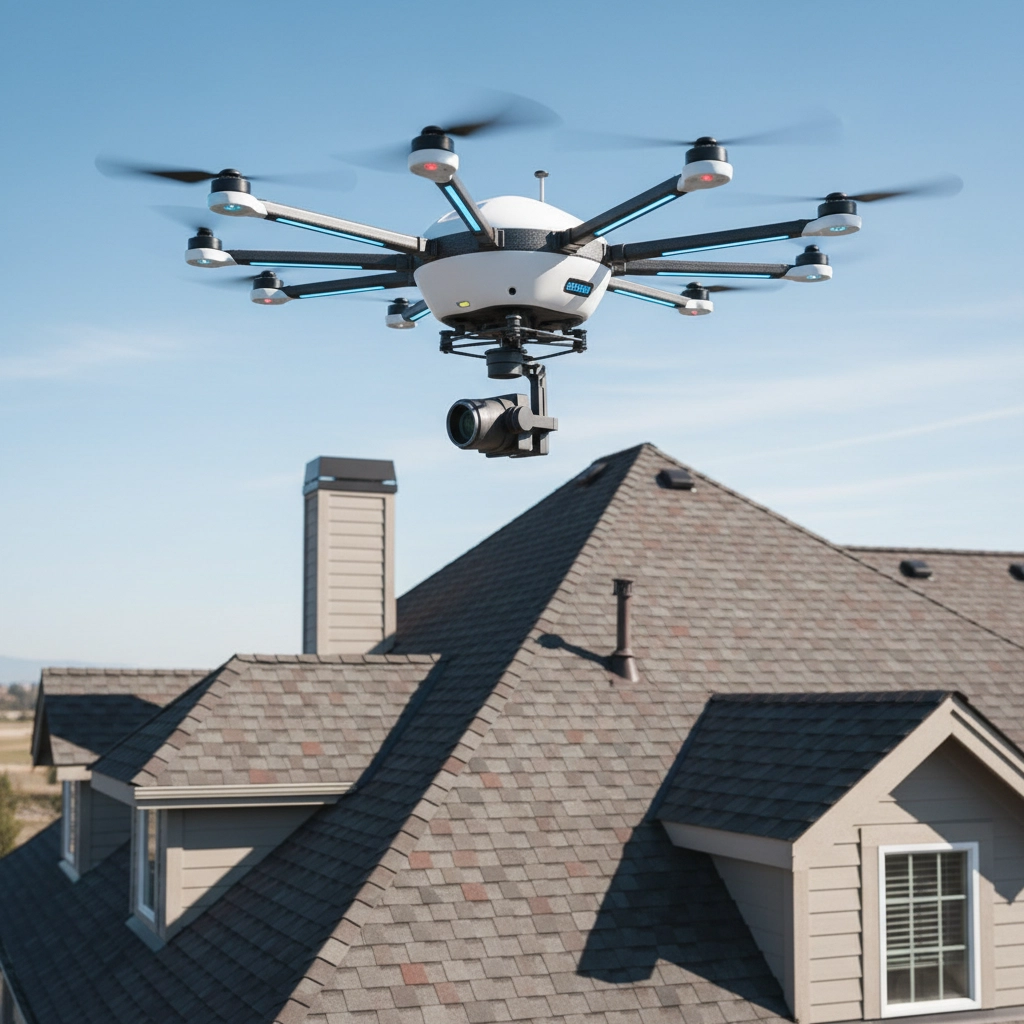
Advanced flight controllers maintain consistent altitude and image overlap percentages during automated survey patterns. GPS positioning systems ensure systematic coverage while preventing gaps in documentation. Battery life constraints limit single-flight duration to approximately 25-30 minutes, which provides sufficient time for multiple residential property inspections.
Systematic Inspection Process
The five-minute timeframe begins when the drone reaches operational altitude above the target structure. Automated flight paths follow pre-programmed routes that account for roof geometry, surrounding obstacles, and optimal image angles. The system captures 150-200 high-resolution images during a typical residential inspection.
Image capture occurs at consistent intervals as the drone maintains steady forward progress along survey lines. Overlapping coverage patterns ensure no roof sections remain unexamined. Side-looking camera angles document vertical surfaces including chimneys, vent penetrations, and roof edges that require different inspection approaches.
Real-time image transmission allows ground-based operators to monitor capture quality and identify areas requiring additional documentation. Flight paths adjust automatically to accommodate wind conditions while maintaining image stability and focus accuracy.
Hail Damage Detection
Hail impacts create granule displacement patterns on asphalt shingles that appear as dark spots or exposed mat material. These impact zones measure 0.25-1.5 inches in diameter depending on hailstone size. High-resolution imagery reveals individual impact locations across large roof areas simultaneously.
Multiple impact density indicates storm severity and helps determine repair urgency. Concentrated damage patterns suggest directional wind patterns during hail events. Impact distribution analysis identifies vulnerable roof sections that experienced the most severe exposure.
Fresh hail damage shows bright exposed areas where granule loss occurred recently. Older damage appears darker as exposed material weathers and accumulates debris. Age determination affects repair priority and insurance claim documentation requirements.
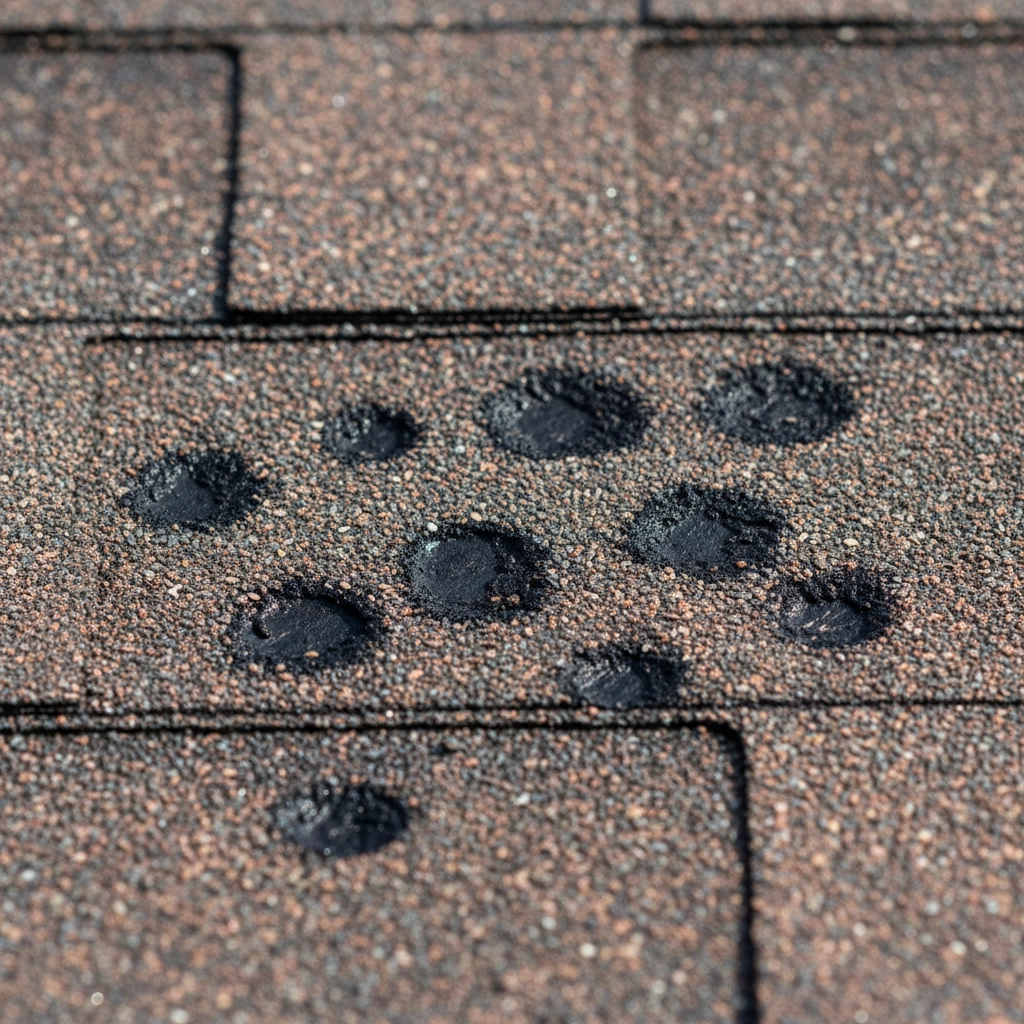
Wind Damage Identification
Wind forces create specific damage patterns including lifted shingle tabs, creased material, and exposed nail heads. Drone cameras capture these indicators from angles that reveal lifting or curling not visible from ground positions. Sequential damage patterns indicate wind direction and intensity during storm events.
Missing shingles leave exposed underlayment that appears as contrasting material colors in aerial imagery. Edge lifting along roof perimeters shows as shadow lines or color variations where shingles separate from decking material. These conditions allow moisture penetration and require immediate attention.
Torn or split shingles create irregular edge patterns that drone cameras document with sufficient detail for repair planning. Debris accumulation in gutters or on lower roof sections indicates material loss from higher elevations.
Moisture and Water Damage
Thermal imaging reveals temperature differentials that indicate moisture retention in roofing materials. Saturated insulation appears cooler than surrounding dry areas due to evaporation effects. These thermal signatures identify leak locations before visible staining occurs on interior surfaces.
Ponding water creates distinct thermal and visual signatures on flat or low-slope roof sections. Standing water areas indicate drainage problems or structural settlement that requires correction. Thermal data shows these conditions even when visual inspection suggests adequate drainage.
Ice dam damage creates thermal patterns along roof edges where repeated freeze-thaw cycles compromise shingle integrity. These conditions damage both surface materials and underlying structure through expansion forces and moisture penetration.
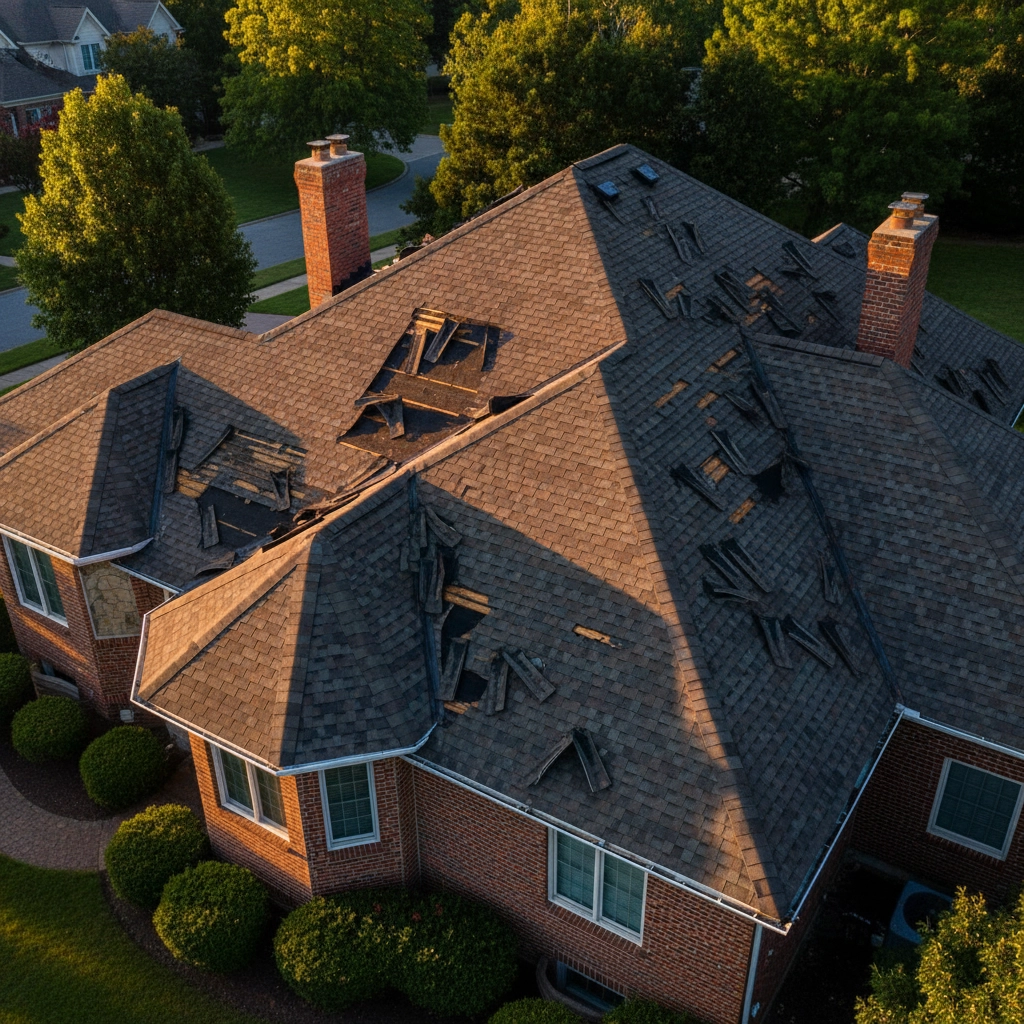
AI-Powered Damage Analysis
Automated analysis software processes captured imagery using trained algorithms that recognize damage patterns across millions of roof images. These systems identify granule loss, impact damage, material degradation, and structural anomalies with accuracy rates exceeding manual inspection methods.
Machine learning models analyze color variations, texture changes, and geometric patterns that indicate specific damage types. Pattern recognition algorithms differentiate between normal wear patterns and storm damage requiring repair. This analysis occurs during or immediately after image capture.
Software generates annotated reports that highlight identified damage locations with specific coordinates and severity classifications. Damage categories include impact damage, material degradation, flashing problems, and moisture issues. Each identified problem receives priority rankings based on repair urgency.
Documentation and Reporting
Inspection results compile into comprehensive reports containing high-resolution annotated images, thermal overlays, and damage location maps. These documents include GPS coordinates for each identified problem area and recommended repair priorities.
Report generation occurs within 24 hours of inspection completion. Digital documentation eliminates transcription errors and provides permanent records for insurance claims, maintenance planning, and warranty documentation. Image metadata includes capture time, GPS location, and camera settings for verification purposes.
Thermal analysis data overlays onto visual images to show temperature distributions across roof surfaces. Color-coded scales indicate temperature ranges and highlight areas requiring attention. These visualizations communicate complex thermal data in understandable formats.
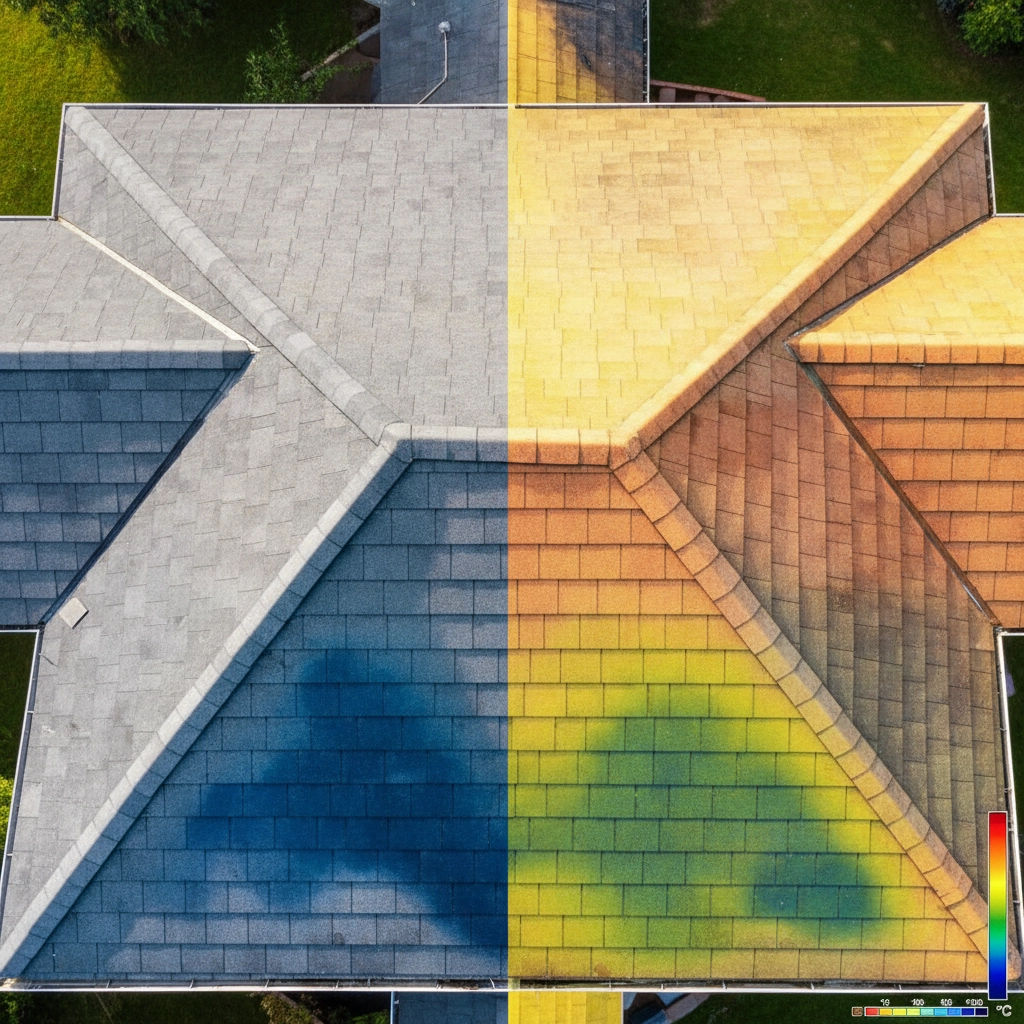
Inspection Limitations
Weather conditions affect inspection accuracy and safety. Wind speeds above 15 mph compromise image stability and flight safety. Rain, snow, or fog prevent meaningful imagery capture and require rescheduling. Optimal conditions include clear skies with minimal wind.
Battery limitations restrict single-flight duration and require planning for larger properties. Multiple flights may be necessary for complex roof configurations or properties with extensive coverage requirements. Flight planning accounts for these limitations during inspection scheduling.
Extremely steep roof sections or complex architectural features may require supplementary inspection methods. Drone imagery provides comprehensive overview documentation but cannot replace detailed examination of critical penetrations or specialized roofing systems.
Getting Professional Results
SkySure Inspections utilizes commercial-grade drone systems with calibrated cameras and certified pilots to ensure inspection accuracy. Professional analysis combines automated software detection with experienced human interpretation to identify problems requiring attention.
Contact SkySure Inspections to schedule your five-minute roof assessment. Our comprehensive reporting provides the documentation needed for maintenance planning, insurance claims, and peace of mind regarding your property’s condition.
Professional inspection scheduling accommodates your availability and provides same-day preliminary results with detailed reporting within 24 hours. Visit SkySure Inspections to request your inspection appointment.

